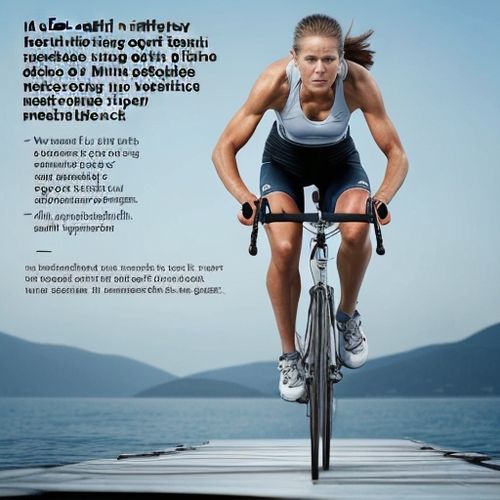The concept of hydration, or the state of being adequately supplied with water, is fundamental to both biological function and chemical processes. Water is not merely a passive solvent in living systems; it actively participates in maintaining cellular structure, facilitating metabolic reactions, and regulating temperature. The hydration state of an organism—whether human, plant, or microbe—can determine its vitality, efficiency, and even survival. Yet, the nuances of hydration extend beyond simple water intake. Molecular interactions, electrolyte balance, and environmental conditions all play critical roles in defining what it truly means to be "hydrated."
At the cellular level, hydration is a dynamic equilibrium. Water molecules cluster around proteins, nucleic acids, and membranes, forming hydration shells that stabilize molecular structures. These shells are not static; they fluctuate with changes in temperature, pH, and ionic concentration. For instance, the folding of proteins—a process essential for their function—relies heavily on the presence of water molecules that mediate hydrophobic and hydrophilic interactions. Without proper hydration, proteins may misfold, leading to dysfunction or aggregation, which is implicated in diseases like Alzheimer’s and Parkinson’s.
In humans, the balance between water intake and loss is meticulously regulated by the kidneys, hormones like vasopressin, and neural mechanisms that trigger thirst. Dehydration, even at mild levels, can impair cognitive performance, reduce physical endurance, and compromise cardiovascular function. Conversely, overhydration—though less common—can dilute sodium levels in the blood, causing hyponatremia, a potentially life-threatening condition. Athletes, elderly individuals, and those working in extreme environments must pay particular attention to their hydration status, as their margins for error are narrower.
The role of electrolytes in hydration cannot be overstated. Sodium, potassium, and chloride ions are pivotal in maintaining osmotic pressure and electrical gradients across cell membranes. Sports drinks often emphasize electrolyte replenishment because sweating depletes these critical ions alongside water. However, not all hydration solutions are created equal. The concentration of electrolytes must align with the body’s needs; too much sugar or salt can hinder water absorption in the intestines, counteracting the intended benefits.
Beyond human biology, hydration plays a transformative role in industrial and environmental contexts. Concrete curing, for example, depends on controlled hydration reactions to achieve strength and durability. Too little water, and the concrete fails to set properly; too much, and it becomes porous and weak. Similarly, soil hydration dictates agricultural productivity. Drought-stricken regions face catastrophic crop failures, while excessive rainfall can leach nutrients from the soil, creating a different set of challenges for farmers.
Technological advancements are refining our understanding of hydration. Sensors that monitor skin hydration in real-time are being integrated into wearable devices, offering personalized insights for athletes and patients. In materials science, researchers are developing polymers that mimic natural hydration mechanisms, leading to innovations like self-healing hydrogels. These materials, which retain water and maintain flexibility, have applications in medicine, robotics, and sustainable packaging.
The cultural dimension of hydration is equally fascinating. Societies have developed diverse rituals around water consumption, from tea ceremonies in Japan to the communal wells of ancient civilizations. Bottled water marketing campaigns have turned hydration into a lifestyle choice, complete with premium brands that promise purity and enhanced mineral content. Yet, this commercialization often obscures a stark reality: millions lack access to clean drinking water, making hydration a privilege rather than a given.
Climate change is exacerbating hydration-related challenges. Rising temperatures accelerate water loss through evaporation, threatening both natural ecosystems and human water supplies. Glaciers, which act as freshwater reservoirs for billions, are retreating at alarming rates. Meanwhile, urbanization and pollution are degrading water quality, forcing communities to rely on energy-intensive desalination or filtration systems. The interplay between hydration and sustainability is becoming impossible to ignore.
Looking ahead, the science of hydration will likely delve deeper into personalized medicine, where genetic and metabolic profiles dictate individualized hydration strategies. Environmental policies will need to address water scarcity with urgency, balancing agricultural, industrial, and domestic needs. Whether at the molecular or global scale, hydration remains a delicate dance—one that requires awareness, innovation, and respect for the resource that makes life possible.

By William Miller/May 9, 2025

By John Smith/May 9, 2025

By Lily Simpson/May 9, 2025

By Eric Ward/May 9, 2025

By Eric Ward/May 9, 2025

By Victoria Gonzalez/May 9, 2025

By Samuel Cooper/May 9, 2025

By Emily Johnson/May 9, 2025

By Noah Bell/May 9, 2025

By Joshua Howard/May 9, 2025

By Eric Ward/May 8, 2025

By Joshua Howard/May 8, 2025

By George Bailey/May 8, 2025

By Grace Cox/May 8, 2025

By Michael Brown/May 8, 2025

By Daniel Scott/May 8, 2025

By Rebecca Stewart/May 8, 2025

By Victoria Gonzalez/May 8, 2025

By Emily Johnson/May 8, 2025

By Olivia Reed/May 8, 2025